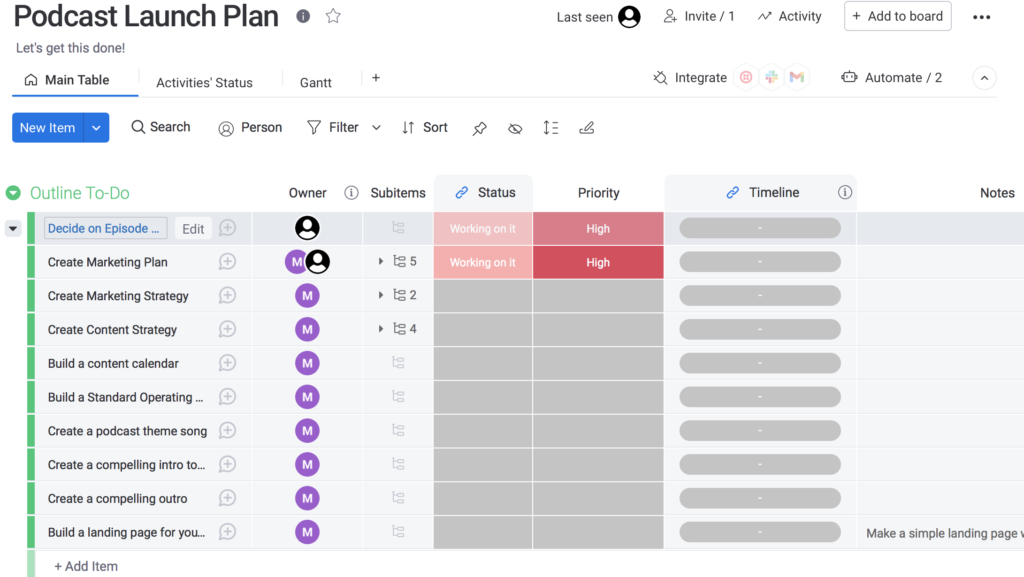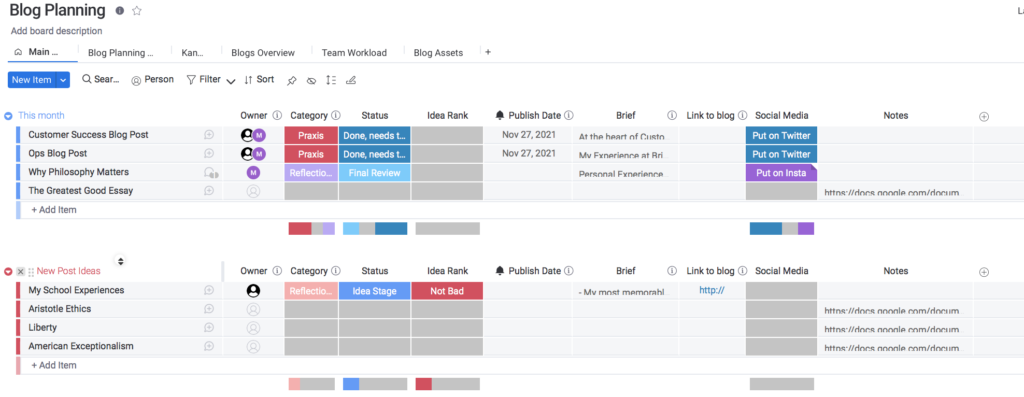“The problem is we’re all using social networks as distribution instead of native platforms to actually tell stories.”
Gary Vee
Everybody says that experience is the greatest educator. In the future, I want to create businesses. Thus, I decided that I might as well see how much I could learn by challenging myself to create a business in 30-days. If you’ve ever thought about doing this, and hope to live vicariously through me, you can follow my journey here and check my socials where I post regular updates.
Why You Might Build a Content Schedule
The idea of a “Content Schedule” seems so legitimate. Businesses having a content schedule might seem obvious, but why would anyone else want to build a content schedule?
It’s the same reason why branding is not limited to big businesses and corporations – tools are tools, and if you utilize them properly they’ll help you get to your desired end. Businesses want to create value. They have content schedules because it keeps them consistent and it makes everything faster and more efficient which works toward their desired end. Content schedules for individuals and smaller brands yield the same results.
The first question is, “are you building a brand?” If you want more information on building brands, you can see a more in-depth explanation in another post. To summarize, everyone is building a brand. It can be as simple as what you’re known for in your community – “he’s trustworthy” – or it can be more focused – “she’s the person that does XYZ.” Either way, your brand is your reputation. People will either naturally come to associate something with you over time, or you can intentionally build your brand around what you want to be known for. That’s what businesses do. They have clarified what they want to be known for, and through their consistency, they prove that to their customers.
If you’re creating a brand, a content schedule is your next step. Brands are consistent. They keep their same feel and tone because that creates trust between their customers/audience. To make sure you remain consistent as a brand, you need to make sure that your brand and desired reputation is clear to you – What do you do? Why do you do it? Who is your customer? What is your brand’s feel?
If you can’t answer those questions, I would refrain from building your content strategy and instead build a business plan. [link to my business plan] Building a business plan is one of the best mental exercises to clarify your mission, goals, value propositions, and so much more.
Once you have your vision and are clear on what your brand is, what you offer, and who your target audience is, you can begin to build a content schedule.
Here’s My Process…
Decide on a platform to map everything out.
Some people like to use excel or another spreadsheet software, but recently I set out to find the very best application for building schedules, and I landed on Monday.com. I tested out Excel, Google Docs, Asana, Trello, [[]] and…
Monday worked the best for me because I like getting as detailed as possible while still keeping a simple, visual appeal. I dislike when apps ask you to choose between information and visual appeal. Monday doesn’t do that. It allows me to keep everything in one location – dates, pictures, copy, status, notes, deadlines, different media platforms, etc., and it even allows collaboration with a monthly subscription, so teams can work together on projects.


Brainstorm on the type of content that is consistent with your brand
You want to be posting regularly so that you and your brand remain at the top of peoples’ minds. That being said, if you’re only posting one content type, your brand and platforms would get very boring. That’s not the goal. The goal is to have pillars of content. What are the different types of posts you could create that would be beneficial for your audience, consistent with your brand, and made into a type of template?
When I was beginning to build my podcast’s content schedule, I wanted to test out different content types that were consistent with the “pro-humanity” theme and could become a pillar of my brand, an example of this was the theme – individuals throughout history who had exuded some aspect of the human genius. If the posts resonated with me and my audience, then I would make it a pillar – every Tuesday I post about an individual in history
Decide how often you want to post.
Based on your brand, how often should you be posting? There’s no right answer, but you have to keep in mind the fine line between over-posting and under-posting. As I mentioned previously, you, as a brand, want to remain top-of-mind to your audience, while not annoying them with the frequency of your posting.
The way to do this is to provide real value. The more value you can pack into your content, the more often you can get away with posting.
Build Templates and Pre-Schedule
The more you can build and schedule en-masse, the easier it will be to keep up with an ambitious content schedule. If you can create a month’s worth of content in a day to a week, you can pre-schedule and automate everything. That’s the secret to success – you have to make high-value creation as easy as possible. For some content that will mean fully creating and scheduling weeks prior, but for other content, it will only mean preparing and creating a framework. Create templates, finalize copy, choose images, and decide on hashtags. As your base performance level, you want to maintain the highest possible standard with the least possible effort.

Post
Once you have a clearly defined brand and content strategy, your main responsibility will be keeping up with it. The concept of “batching” will help here. “Batching” is about categorizing tasks, and making execution more efficient by doing all like-tasks at once. Batch as much of your content creation as possible, then pre-schedule what you can through a content scheduler. Some options for content schedulers include: —-
The goal of a content schedule is to make everything easier. In clarifying your brand and narrowing your focus, your posting is no longer sporadic, and instead is consistent, familiar, and is immensely valuable.
I’ll share a great tip I was given about creating and posting content – create a 1-10 rating for measuring content based on your desired outcomes and brand. Some examples could be – novelty, visual appeal, emotional transference, and entertainment. Measure every potential post against that rating system. If an individual post does not measure between 7-10 on your rating, don’t post.